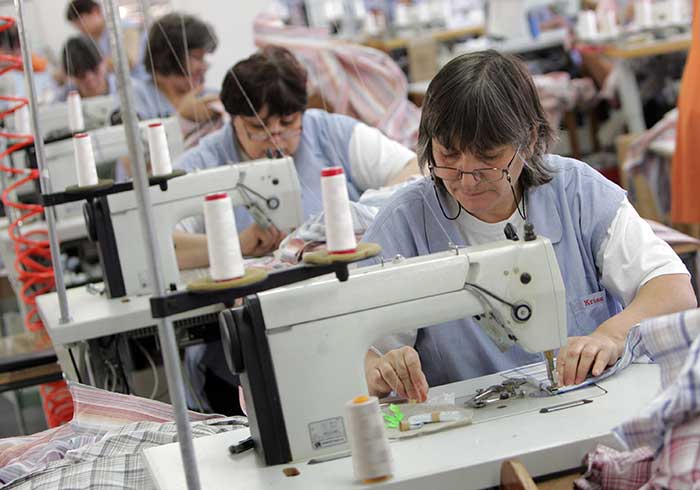web_easterneuropeworkers_shutterstock_146452787.jpg

Women working in a textiles factory
The unemployment rate for the OECD as a whole fell by 0.3 percentage points over the course of last year, while the euro-area rate fell by three times that (0.9 percentage points).
Spain, Portugal, Slovakia and Ireland led the charge with the biggest year-on-year declines in the region, with reductions of 2.3, 2.0, 1.9 and 1.7 percentage points in December respectively.
Greece also performed strongly, with a fall of 1.5% year-on-year in October 2016 (the latest month available). The country’s statistics office also reported a further drop between last October and November yesterday, from 24.5% to 23% – the highest in the eurozone.
Italy however saw its jobless numbers rise by 0.4 percentage points over 2016. A crisis in the country’s banking sector, which is plagued by hundreds of billions in bad loans, and political upheaval has hit confidence.
At 12%, Italy’s unemployment remains at the highest in a year and a half. The situation is particularly dire among young people, 40.1% of whom are out of work.
The eurozone’s labour market has been showing promising signs of improvement, with the unemployment level now 3.75 million lower than its mid-crisis peak and the unemployment rate at its lowest since May 2009.
Across the OECD, the think-tank said the unemployment rate remained stable at 6.2% in December 2016, for the second consecutive month. Over 38 million people were unemployed – 5.9 million people more than before the financial crisis.
Canada, Mexico and the US all saw their rates rise, by 0.1 percentage point to 6.9%, 3.8% and 4.7% respectively, while the rate remained stable in Japan (at 3.1%) and fell in South Korea (by 0.2 percentage points, to 3.4%).
The OECD warned that more recent data for January 2017 suggest rates could rise by a further 0.1 percentage points in the US, to 4.8%.













